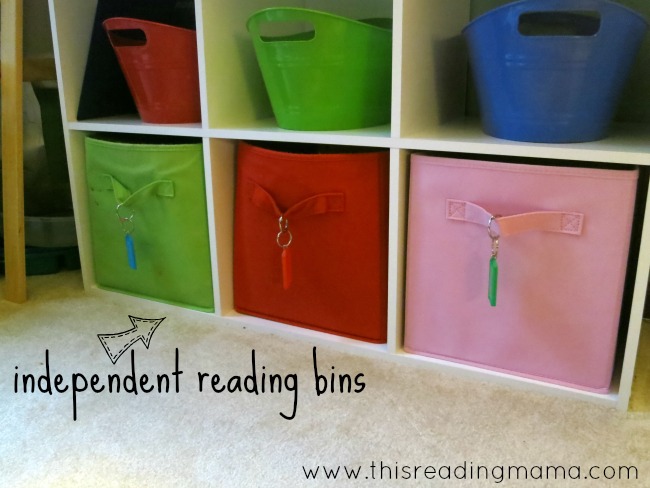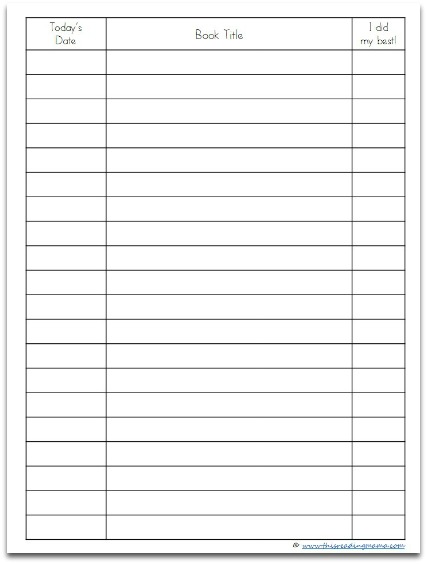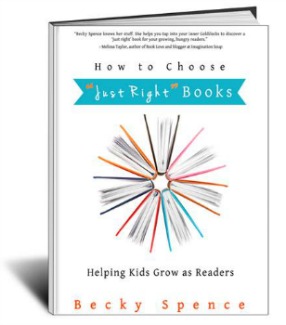 *This post contains affiliate links. Please read my full disclosure policy for more information.
*This post contains affiliate links. Please read my full disclosure policy for more information.
From the very beginning, I have read tons of books to and with my oldest, ALuv (2nd grade). Despite my best efforts to keep his texts on his “just right” level and picking texts that interest him, he has very much become a reluctant reader this school year. As his texts become longer, he simply does not want to read them (even though we do), much less re-read for fluency. But as a reading specialist, I know how important re-reading is for building fluency. Today, I am sharing more about that over at The Homeschool Classroom. I hope you’ll take a peek.
Quiet Time to Re-read for Fluency
Each week, I introduce new texts to my son on his “just right” level. The texts I use with him are mainly non-fiction texts appropriate for second graders (like these), stories from All About Reading Level 3, or those like the Froggy or Franklin series. As we read together, we work on decoding strategies and comprehension strategies. After I know that he can read and comprehend the text without my help (independent level), I place it in his independent reading bin. Each day, part of his morning work is quiet reading for 20 minutes. (If he was independently reading chapter books, I could put them his independent reading book bin, but would not expect that he re-read an entire chapter book, although some kids may like to do this!)
 I also try to gather the troops and ask everyone to read/browse through books at this time from their independent reading bins. This way, the house is a little bit quieter, making it easier for re-reading and comprehension. My oldest three children all have their own independent bins (as seen above).
I also try to gather the troops and ask everyone to read/browse through books at this time from their independent reading bins. This way, the house is a little bit quieter, making it easier for re-reading and comprehension. My oldest three children all have their own independent bins (as seen above).
- NJoy (age 5) has all of the books from Reading the Alphabet, BOB Books from Set 1, and books from some of our Pre-K/K packs. He is a book lover of all kinds so he mixes it up between the books in his bin and other books.
- MBug (age 3) just trades out books as she wants, “re-reading” emergent readers she’s colored from my free Pre-K/K packs.
- NSis (age 2) has her own little basket of board books in the corner. She usually brings me book after book for me to read or listens to ALuv read to her (one tricky way I get him to read and re-read).
My only required reading is that ALuv pick at least one book from his independent bin. After that, he can read to his sister, look through library books he’s picked out, work on his Bible verse for the week, or I read aloud on occasion (we have a separate read aloud time during snack). But after some time of quiet reading time, I noticed that he was picking the same couple of shorter books each day and re-reading those every.single.time. He was not re-reading the longer, newer texts.
Re-reading Log
 So, knowing that he is motivated by earning money, I created this very simple re-reading log for him (click on the image or HERE to download it), with 20 spaces for 20 different books. The catch is different. He is more than welcome to re-read his favorite books, but in order to log them in, the book titles he writes on the chart have to all be different. I agreed to pay him 5 cents for every book that he re-reads from his independent reading bin. If your child is not motivated by money, feel free to use another incentive or don’t use incentives at all. This is flexible. Each time he re-reads a book, he has to enter the date, the title, and check that he did his best (a little accountability to keep him from just looking at all the pictures and saying he’s “re-read”).
So, knowing that he is motivated by earning money, I created this very simple re-reading log for him (click on the image or HERE to download it), with 20 spaces for 20 different books. The catch is different. He is more than welcome to re-read his favorite books, but in order to log them in, the book titles he writes on the chart have to all be different. I agreed to pay him 5 cents for every book that he re-reads from his independent reading bin. If your child is not motivated by money, feel free to use another incentive or don’t use incentives at all. This is flexible. Each time he re-reads a book, he has to enter the date, the title, and check that he did his best (a little accountability to keep him from just looking at all the pictures and saying he’s “re-read”).
Please note that this is not intended to “fix” a reluctant reader. It certainly has not for us. Does he still pick the same books? Some days. But it’s not happening as often as it used to, which is growth. 🙂
What are some things you do at home to encourage your children to re-read?
More Fluency Resources:
- How to Choose “Just Right” Books: Helping Kids Grow as Readers ~ lots of practical tips and help for choosing “just right” books for your reader. Buy now for $3.99.
- Helping Kids Choose “Just Right” Books {with a free printable chart}
- Struggling Readers Need to Read with Fluency
- Modeling and Teaching Fluent Reading
- DIY Fluency Boards
- Reading Pinterest Boards: Reading Ideas, Struggling Readers, Reading Tips & Tricks, and Comprehension Strategies
Stay connected to This Reading Mama so you don’t miss a thing:
- Subscribe by email {get really cool FREEBIES when you do!}
- Google+
~Becky

We follow almost the same strategies. I introduce new books and after we’ve used these books for guided reading lessons they move into an independent reading basket. We have quiet reading time every day.
I have found that having the children read aloud to me really helps build their fluency. When they are younger we take turns re-reading their little reading books to each other. I read with great enthusiasm and voices and I have found that they immediate this enthusiastic form of reading. Reading with a bit of gusto goes along way for developing fluency.
As MacGyver began reading longer chapter books we took turns reading the pages to each other. He is now ten and reads like crazy! He loves reading. For homeschool he must read a variety of books. I do book talks and he makes his own selections. However, during his free time he reads his own choices. I think he’s on #35 in The Hank The Cow Dog Series.
I love the idea of reading in different voices together. We do our first readings together as well. I have found it makes the longer texts more manageable. 🙂
Never occurred to me to have my boys re-read for fluency. Oh dear. I may need to move in with you for a bit so I can get my act together!
Haha! You more than have your act together, sister! 🙂
An important thing for children to do! Thanks for sharing at After School!